The Technique of Chiaroscuro in Contemporary Painting
Are you interested in knowing what is chiaroscuro exactly? Traditionally, the fine art term chiaroscuro comes from the combination of Italian words that roughly translate to light and dark. The term describes the striking use of the light and shade[1] contrast in painting, drawing or print. The main principle of chiaroscuro is that solidity of form is best achieved by the effect of light falling on it, allowing the shading to give two-dimensional figures a sense of volume. Through the value gradation of color and the analytical division of bright and shadowed shapes, the chiaroscuro artists create the illusions of three-dimensional forms and of the light coming from a specific source, often achieving dramatic effects. In fact, it is a well-accepted theory that these dramatic effects were the main reason why artists opted to use this incredibly challenging method throughout the centuries. The most notable individuals who used chiaroscuro include the likes of Rembrandt, Leonardo da Vinci and Caravaggio.
Over the course of art history, painters seem to be the ones who have taken chiaroscuro to its most impressive heights. In painting, the chiaroscuro technique takes advantage of the special qualities of oil paint which enables the most awe-inspiring transitions from light to dark and vice-versa. Oil paint could be easily blended and shaded, built up in layers or applied in translucent glazes - all extremely valuable features when it comes to chiaroscuro. By applying light tones on top of the dark ones, painters could create the absolute illusion of figures emerging from the shadows. As it was hinted earlier, chiaroscuro technique can also be applied to a drawing, but only in a very specific way. Such a piece is made by using solely dark and light lines to create the illusion of the third dimension. As far as printmaking goes, a chiaroscuro woodcut print is made by printing different blocks using different tones, creating the shading effect in the process. We will now take a look at the legendary master of chiaroscuro and the practice's most common features, as well as explore just how big a role does the chiaroscuro technique plays in the contemporary age.

Caravaggio - The Master of Chiaroscuro Technique
Although many notable great artists in history tackled the difficult method of chiaroscuro, this technique truly reached its peak in the paintings of Michelangelo Merisi - Caravaggio, during the late 16th century. The famed painter used deep, dark backgrounds for many of his pieces and reached such perfection with chiaroscuro technique that it seemed as if he was able to turn a completely controlled spotlight on his figures.[2] The lack of symmetry and the presence of high contrast in those paintings made for intensely powerful and dramatic works of art frequently praised as some of the greatest masterpieces ever created. It was only because Caravaggio managed to take chiaroscuro to a whole different level that the entire technique was suddenly synonymous with high contrast, despite this being far from the entire description of this technique.
The source of the intense illumination in a Caravaggio's chiaroscuro painting was rarely a part of the composition. Merisi got so good with applying chiaroscuro that the emphasis on light and shadow occasionally became more important than the scenes themselves. The dramatic contrast between an intensely somber background and the effects of light is now considered to be a trademark of Caravaggio's art. Many authors were brilliant with their versions of chiaroscuro, such as the aforementioned Leonardo da Vinci and Rembrandt, but the incredible artistic heights artist reached with his work will most likely forever remain unmatched. It is no wonder that his artworks were used as a supreme visual carrier of Counter-Reformation of the Catholic Church at the time.
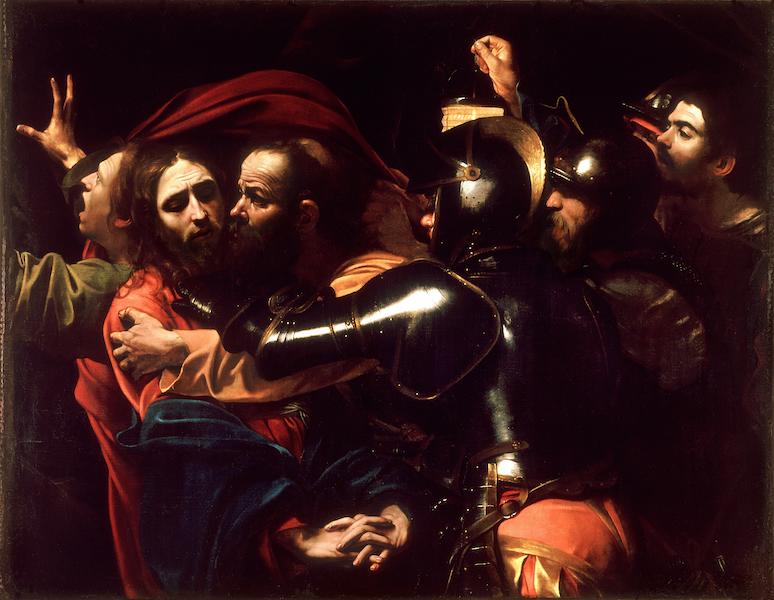
Caravaggesque and Caravaggisti
The influence Caravaggio had on the entire world of art was extraordinary, to say the least. His intense compositions sparked a separate style of painting which is now described as Caravaggesque. This classification of one's style indicates a highly realistic portrayal of figures with the focus being placed on dramatic situations and subjects with a high contrast of light and dark - the most common descriptions of what the definition of chiaroscuro is. However, the effect of Caravaggio's art did not stop at just spurring a class of style. The Italian painter had followers who were well aware of who set their ideals and these authors called themselves The Caravaggisti (or the Caravagesques). These followers, whether Italian, Spanish, French or Netherlandish, were attracted to their creative master’s tenebrism and their emergence marked the first true indicator of just how crucial Caravaggio was to the development of painting. Their hard work was an especially lucky occurrence for all of art history as the painter never had a workshop or any other means of spreading his techniques. Fortunately, his masterful way of using chiaroscuro could be indirectly seen in the works of Peter Paul Rubens, Jusepe de Ribera, Gian Lorenzo Bernini and Artemisia Gentileschi.

Chiaroscuro's Place in the Contemporary World of Art and Artists
Today, the term chiaroscuro is frequently applied to a wide array of dramatic lighting effects and it is used as a technical word linked to many mediums and kinds of art[3]. It is related to literally any form of expression that possesses something dark and moody with strong slashes of shadow[4] that emphasize the dramatic effect. Interestingly, the traditional power of the chiaroscuro painting and the tense action within their frames had a massive influence on cinematography as the genres such as Film Noir heavily based their visuals on it. Many filmmakers have stated that chiaroscuro technique shaped the final looks of their movies - for example, Martin Scorsese actually referenced Caravaggio as one of his biggest inspirations behind many of his films.
Many contemporary authors have not only adopted chiaroscuro as their focal point but have also expanded on the technique's possibilities with all the technological advancements available to them. It goes without saying that the technical mastery of the this painter is still considered the crème de la crème of the method, but many four centuries younger artists have taken chiaroscuro down some unexplored and original paths - often with quite amazing results.
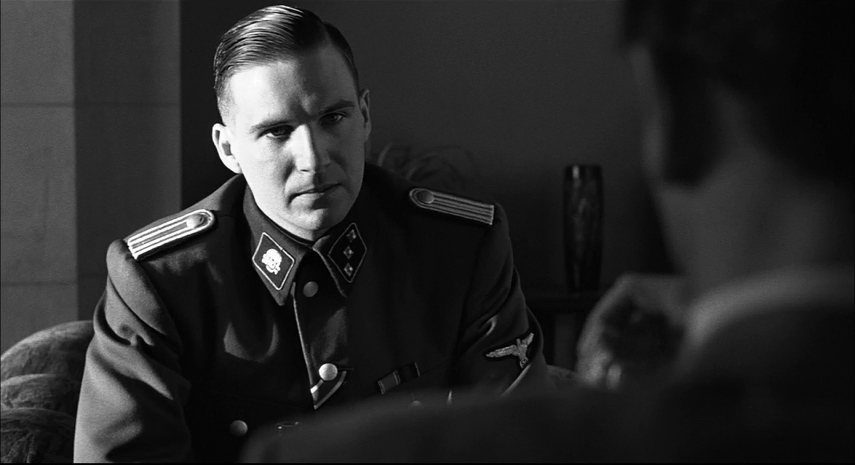
The Chiaroscuro Nicola Samori
Nicola Samori’s way of creating dark themed Baroque-like oil paintings is impressive in its own right, but the aspect that makes this artist so unique is that Samori purposefully destroys his pieces after they are completed. He damages the key elements within the composition with a knife or diluent in order to negate classical representation and question the very definition of painting, adding a strong reference to the early avant-garde art. Nicola explains such a practice by stating that what lies behind the damage applied is a freshness and an intensity unknown in the outer tones. This concept is remarkably intriguing, but what secures Samori's place in this article is the fact he possesses an exceptional ability to use chiaroscuro style.
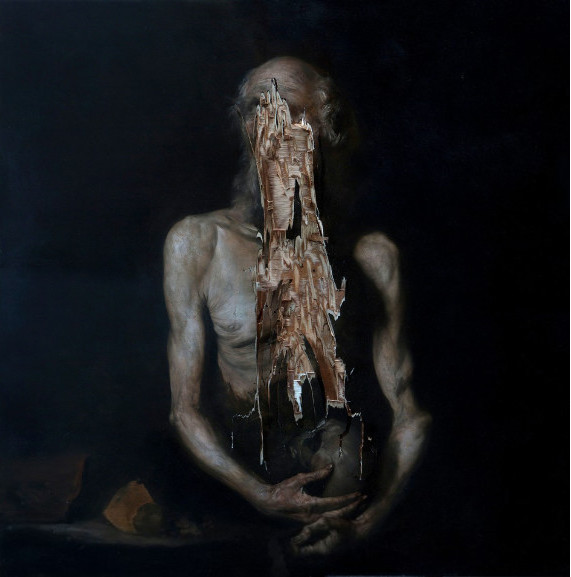
Jesse Lane
Staying true to Caravaggio's original roots of realistic depictions, Jesse Lane is an American painter who combines the concepts of Hyperrealism and chiaroscuro. His paintings aim to channel the emotional impact and capture intimate moments wrapped into a single instant presented to the audience. Lane's pieces are rather open-ended, as the artist himself explained on many occasions, and his goal is to make the viewers create the narrative on their own. When observed from a technical standpoint, it's hard to find a more talented painter than Jesse Lane both in regards to Hyperrealism and chiaroscuro art.
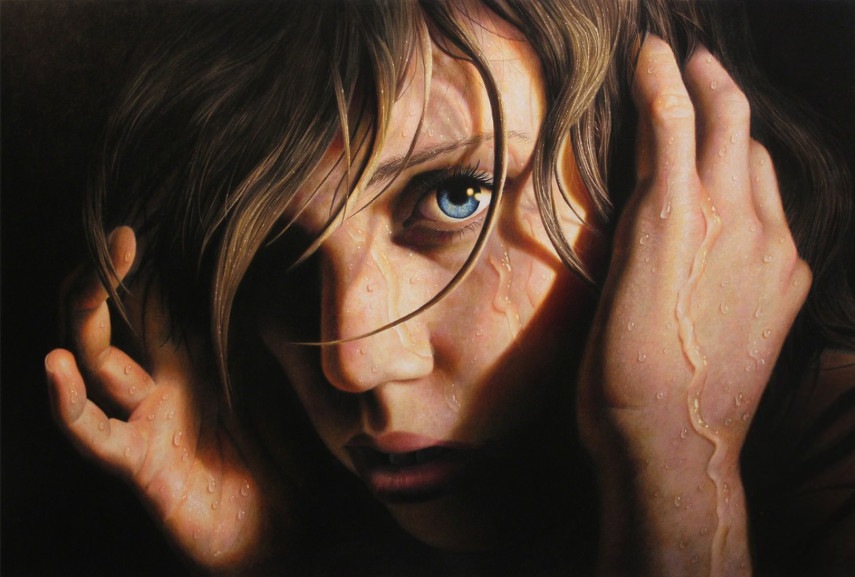
Nicola Verlato
With his specialty being found in the fusion of popular imagery and traditional painting techniques, it's no wonder that Nicola Verlato's amazing painterly world enjoys such a high level of respect within the art community. This Italian artist is primarily known for his highly refined allegorical surrealism that features spectacular light effects, twisting nude figures and dense compositions, all underlined by a commanding application of chiaroscuro. Wonderful and bizarre, his compositions are a true delight to analyze.
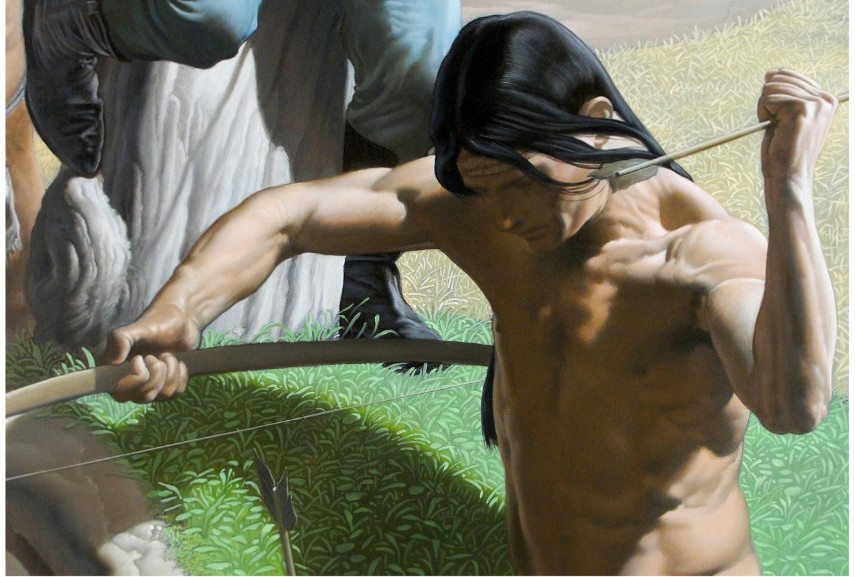
Henrik Aarrestad Uldalen
Henrik Aarrestad Uldalen is a self-taught painter whose creations revolve around the classic figurative painting wrapped in a contemporary manner. Just as Nicola Samori, Uldalen also seems to feel at home with darker settings as he explores the dark sides of life such as nihilism, existentialism, longing and loneliness. Yet, all his characters and elements are juxtaposed with fragile beauty enabled by the fantastic utilization of chiaroscuro used in such a fashion that gives Uldalen's paintings a look of a dream or limbo-like state. As is the case with Jesse Lane, Henrik Aarrestad Uldalen also focuses more on atmospheres rather than narratives.
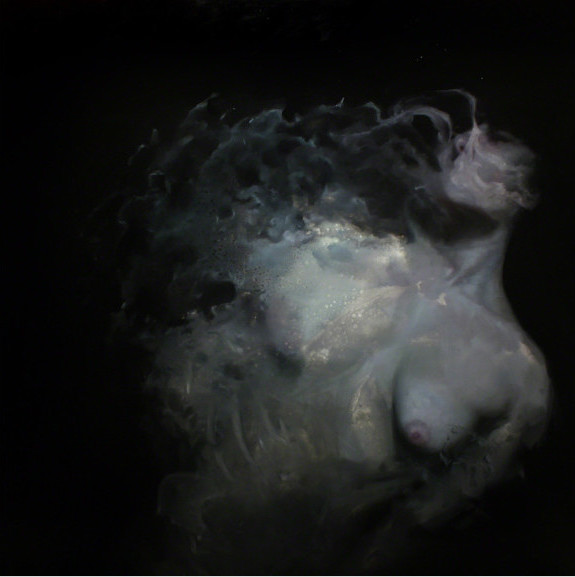
A New History : Chiaroscuro in Contemporary Photography
When used as a photography technique, the chiaroscuro style is often referred to as clair obscur or extreme low key. Just as the case is with movies, it's rather interesting to investigate how this shading method traditionally associated with chiaroscuro painting has evolved in order to become a viable option for modern artists. As far as the realm of photography is concerned, chiaroscuro kept its strong and bold contrasts between light and dark areas. Of course, the dramatical effects such photos are able to channel is often the reason why photographers opt to use this method of picture-making.[5] The chiaroscuro style of photography is often well-suited for portraits[6], still life compositions and boudoir. The pioneering attempts to translate this method into the vocabulary of camera images can be traced to the early developments of black and white imagery - for instance, Alfred Stieglitz was one of the oldest practitioners to successfully use a form of chiaroscuro in his work.
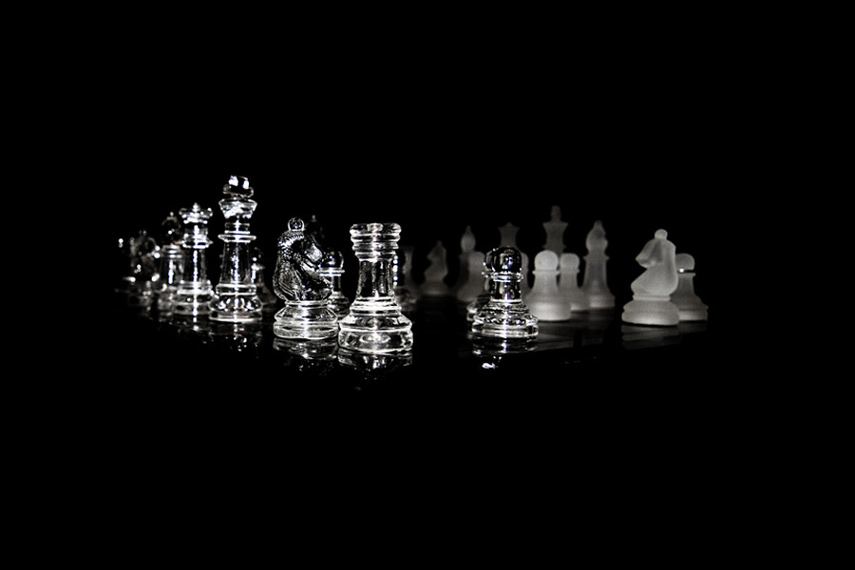
Prabuddha Dasgupta
Prabuddha Dasgupta was a noted fashion and fine-art photographer that originally hailed from India. He was essentially known for his now-iconic black and white photos that featured nudes in a chiaroscuro style. For more than three decades, Dasgupta worked hard to develop his shading approach, eventually leading to an almost perfect control over his dramatic compositions. Today, Prabuddha Dasgupta is considered to be both a milestone for fashion photography and the contemporary use of chiaroscuro in photos.

Christy Lee Rogers
Just like many contemporary authors mentioned in this article, Christy Lee Rogers evokes the strong feeling of Baroque paintings as well. Her breathtaking photographs are of people submerged in water, taken as her subjects twist and turn in what appears to be an endless dark abyss. Interestingly, self-taught Christy Lee Rogers only uses natural light to create chromatic relations, ultimately defying the conventions of photography. The way this artist uses the chiaroscuro style is unmatched as her images simultaneously present viewers with both a sense of struggle and purification. Haunting and visually mesmerizing, Rogers seems to have reached the very peak of photographic chiaroscuro technique.
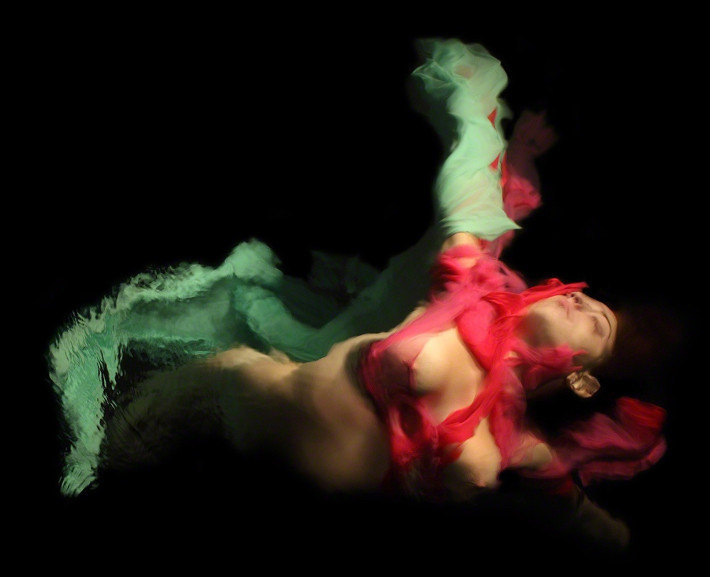
Olivier Valsecchi
Olivier Valsecchi is a French photographer whose artworks resemble both William-Adolphe Bouguereau’s nudes and Salvador Dali’s surreal paintings. Relying on the effects of the chiaroscuro style for dramatic impact, Valsecchi's art is centered around the grim and complex themes of death, birth, rebirth and maternity. He introduced many fresh concepts to the chiaroscuro technique in photography. For example, his Time of War series depicts frozen bodies of naked dancers covered in ashes that enhance their shaded silhouettes. Olivier Valsecchi also experimented with Klecksography as he made images of complex artistic symmetries of naked bodies intertwined in each other.
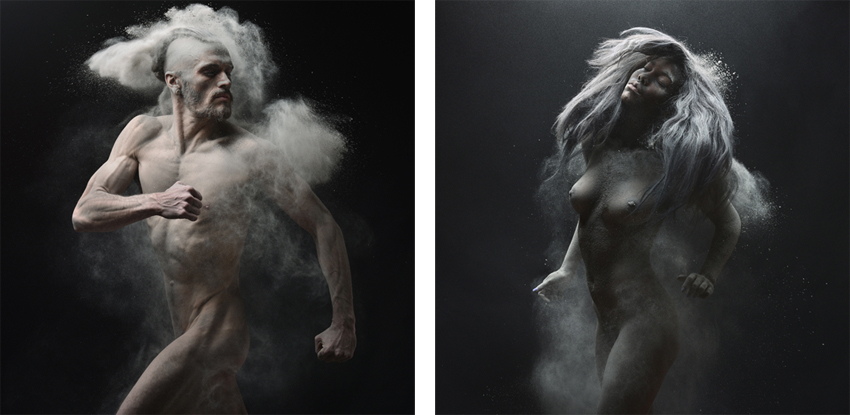
Editors’ Tip: Chiaroscuro: A Dialectical Approach to Aesthetics
Chiaroscuro: A Dialectical Approach to Aesthetics explores how an artist can animate the inanimate, delight with light, sooth with shadows. It takes a standpoint which emphasizes that men started to sketch and paint even before the advent of language and scripts - in that sense, painting is the man’s oldest religion and comes as natural to him as the air he breathes. And in the entire history of creating paintings, this book takes a deep and long look at what many experts believe to be the most sophisticated painterly style ever invented - chiaroscuro. Chiaroscuro: A Dialectical Approach to Aesthetics is a collection of selected works of a passionate artist who is trying to find out the deeper meaning and foundation of aesthetics and its impact on human consciousness by investigating its selected method of creating images.
References:
- Civardi, G., Drawing Light & Shade: Understanding Chiarascuro, Search Press, 2006
- Cox, M. S., Chiaroscuro: The Mouse and the Candle, Curiosity Quills Press, 2016
- Datta, S., Chiaroscuro: A Dialectical Approach to Aesthetics, Partridge Publishing India, 2014
- Koller, E. L., Light, Shade and Shadow, Dover Publications, 2008
- Gabriel, J., Chiaroscuro: Love & Dark, Create Space Independent Publishing Platform, 2016
- Torres-Calderón, A., McCard, V. L., Chiaroscuro, Pandora lobo estepario Productions, 2014
Featured Images: Caravaggio - Saint Jerome Writing - Image via walksofitaly.com; Christy Lee Rogers - Pagliccia - Image via ilovetexasphoto.com; Caravaggio - The Incredulity of Saint Thomas - Image via webartacademy.com; Olivier Valsecchi - Home - Image via oliviervalsecchi.com
Can We Help?
Have a question or a technical issue? Want to learn more about our services to art dealers? Let us know and you'll hear from us within the next 24 hours.

